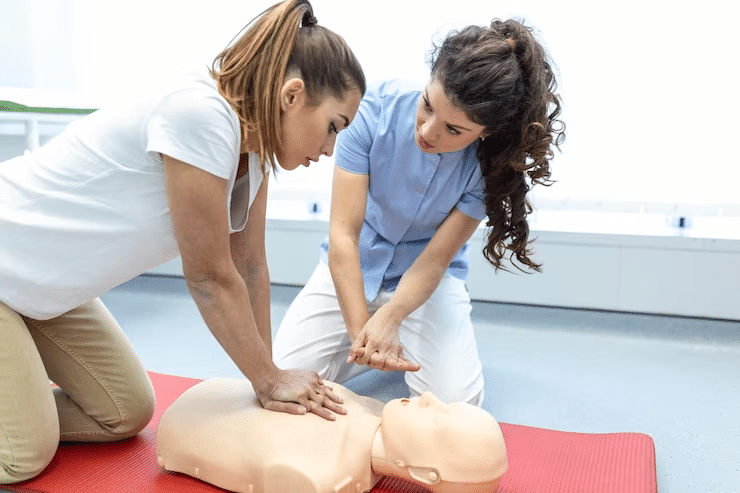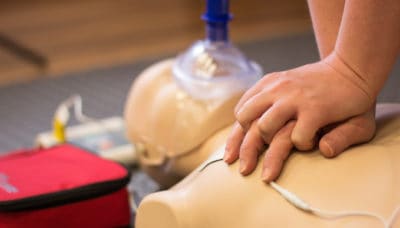Introduction
Cardiopulmonary Resuscitation (MOUTH-TO-MOUTH RESUSCITATION) is more than just a collection of chest compressions and breaths; it's a life-saving skill that can be the distinction between life and fatality in emergency circumstances. The knowledge obtained from a first help course or CPR course can encourage individuals to respond successfully when faced with a heart attack, choking case, or various other vital emergency situations. This article checks out the real-life applications of mouth-to-mouth resuscitation, highlighting its relevance and the influence of training on conserving lives.
Real-Life Applications of CPR: When Educating Saves Lives
Understanding CPR
CPR is an important emergency situation treatment made use of to protect brain function until additional measures are taken to restore spontaneous blood flow and breathing. It involves two elements:
Chest Compressions: These simulate the heart's pumping activity to maintain blood flow. Rescue Breaths: These offer oxygen to the lungs, important for survival.
The effectiveness of mouth-to-mouth resuscitation considerably increases when done right away after heart attack. Research studies show that prompt CPR can increase or triple the possibilities of survival for victims.
Importance of Emergency treatment Courses
First aid training courses equip people with crucial skills beyond CPR, consisting of wound treatment, acknowledging strokes, and taking care of cracks. By participating in these programs, you're not just learning more about emergencies; you're preparing on your own to act decisively when it matters most.
Key Parts of First Aid Courses
- Basic Life Assistance (BLS): Covers grown-up, child, and baby mouth-to-mouth resuscitation techniques. Choking Relief Techniques: Includes back blows and stomach thrusts. Wound Management: Exactly how to clean up and clothe injuries properly. Recognizing Emergencies: Recognizing when to call for assistance versus taking care of a scenario independently.
The Role of CPR in Heart Attack Situations
Every year, hundreds of thousands experience cardiac arrest outside healthcare facilities. Without instant treatment, the survival rate goes down considerably every min that passes without CPR.
Statistics on Cardiac Arrest Survival Rates
|Time Without mouth-to-mouth resuscitation|Survival Rate (%)|| ------------------|-------------------|| 1 Minute|90|| 5 Minutes|50|| 10 Minutes|10|
Source: American Heart Association
Being learnt CPR makes sure that spectators can step in confidently throughout these crucial moments.
Real-Life Case Studies Demonstrating Effective CPR Application
Case Research study 1: The Quick-Thinking Bystander
In a bustling café one sunny afternoon, an individual fell down due to heart attack. A nearby diner who had actually finished a first aid and mouth-to-mouth resuscitation course jumped into activity. They began carrying out upper body compressions while another client called 911. Within minutes, paramedics arrived and made use of an Automated External Defibrillator (AED), ultimately restoring the patient.
Case Study 2: Work Environment Emergency
During a corporate training occasion, an employee unexpectedly fell unconscious. The good news is, numerous coworkers were certified in both emergency treatment courses and advanced life support strategies. Their swift action consisted of calling emergency situation services while doing top notch CPR until aid arrived.
Why Participate in CPR Courses?
CPR courses deal hands-on training that builds self-confidence in your capabilities during emergency situations. Below are some compelling reasons to enroll:

What Are the Various Kinds Of Mouth-to-mouth Resuscitation Courses Available?
When thinking about which training program matches your demands best, it is necessary to understand the different types of readily available programs:

Basic Adult/Child/Infant mouth-to-mouth resuscitation Course
This course concentrates on age-specific techniques tailored for adults, children, and infants with thorough hands-on method on mannequins.
hltaid011 first aid course requirementsAdvanced Cardiovascular Life Assistance (ACLS)
Geared toward health care specialists, ACLS builds on basic life assistance abilities with advanced treatments like medication management and progressed airway management.
Pediatric Advanced Life Assistance (BUDDIES)
Designed for healthcare providers who handle seriously ill babies and children; chums consists of situations specific to pediatric emergencies.
Online vs In-Person Training
Many companies currently offer online modules which can supplement conventional class discovering however do not change hands-on technique vital for mastering skills like chest compressions.
Benefits of Having an Emergency Treatment Certificate
Obtaining an emergency treatment certificate demonstrates your commitment to safety and preparedness in different environments-- whether at home or work-- boosting both specialist integrity and individual assurance when emergency situations arise.
Career Advantages
Having qualification can improve employability in areas such as education, healthcare industries, health and fitness training industries where safety and security is paramount.
Common False impressions About CPR
It's important to resolve myths bordering this vital capability:
Myth # 1: "Just Clinical Professionals Ought To Execute mouth-to-mouth resuscitation"
Fact: Anyone can carry out fundamental life-saving methods if educated properly; you don't need clinical expertise!
Myth # 2: "You Can Hurt Someone by Carrying out mouth-to-mouth resuscitation"
While it holds true there's some risk entailed-- it's much outweighed by the prospective benefits when performed correctly!
Myth # 3: "CPR Is Only Essential For Adults"
Children additionally require timely interventions; hence understanding pediatric approaches is equally vital!

FAQs About Real-Life Applications of CPR
FAQ 1: What must I do if I see somebody collapse?
If you witness somebody collapse:
- Check responsiveness Call emergency situation services Begin executing CPR right away if they reveal no indicators of breathing
FAQ 2: Exactly how frequently should I renew my certification?
Most companies suggest restoring your emergency treatment certification every two years as a result of progressing guidelines and practices.
FAQ 3: Can I learn mouth-to-mouth resuscitation online?
While online programs offer valuable details, hands-on practice is required for understanding skills successfully-- seek hybrid options if possible!
FAQ 4: What are some suggestions for performing effective upper body compressions?
Aim for:
- A deepness of at least two inches A rate around 100-120 compressions per minute Allow full recoil in between compressions without lifting hands off the chest
FAQ 5: Do I require unique equipment for doing rescue breaths?
No unique devices is called for! Nonetheless making use of barrier tools like face guards can enhance safety and security while offering rescue breaths if available.
FAQ 6: What duty does AED play in conjunction with CPR?
Automated External Defibrillators evaluate heart rhythm & & encourage whether shocks are needed which substantially boosts opportunities of survival when made use of along with high-quality breast compressions!
Conclusion
The real-life applications of CPR are indisputable; they prolong much beyond academic understanding right into actual situations where lives are Visit this website conserved through crucial actions taken by skilled individuals. Enrolling in a comprehensive first help course or participating in specialized CPR courses equips you with indispensable abilities that could make all the difference during an emergency situation scenario-- not simply profiting others but empowering yourself as well! The time spent today prepares you for whatever tomorrow might bring-- and isn't that something worth considering?